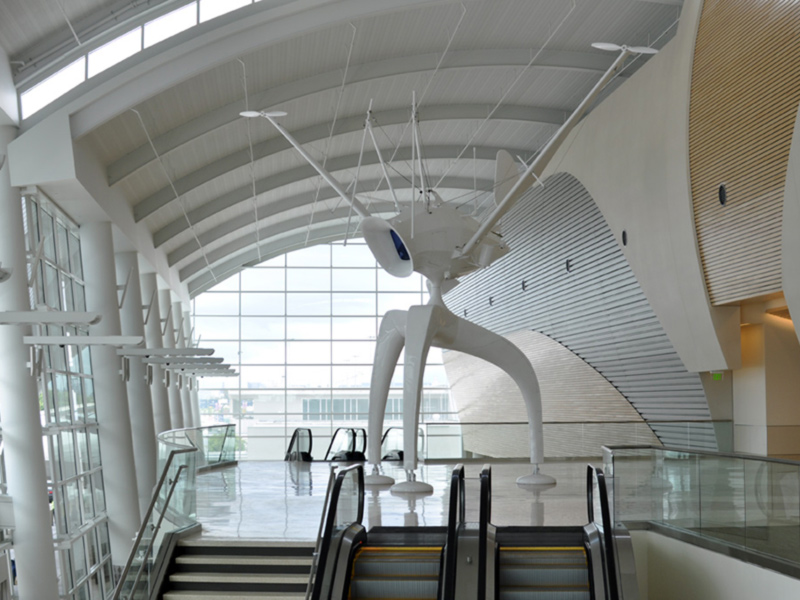Flight crews will use a variety of paths to enter or depart from the Bay Area largely depending upon current or forecasted weather conditions in the Bay Area. During inclement weather conditions, pilots can fly a prescribed route for departures or arrivals which will result in aircraft utilizing ground based navigational equipment or GPS coordinates to fly a route to safely arrive into or depart from the area. If weather conditions are clear and the flight crew is able to see the ground, the FAA will allow the flight crew to descend into the Bay Area through a visual approach or depart from the Bay Area prior to completing the prescribed route for departures. The avenue in which the flight crew is issued to use for the arrivals and departures for aircraft are provided, published and enforced by the Federal Aviation Administration (FAA) and not the Airport.
No. The Federal Aviation Administration (FAA) controls and regulates all airspace. Any change in departure or arrival flight paths must be approved and implemented by the FAA. The Noise Office is here in large part to help foster communication between the airport, FAA and the local community. Additional information regarding "South Flow" procedures can be found in our separate FAQ.
The flight paths into San José Mineta International Airport have not been largely impacted by changes due to OAPM initiatives or NextGen planning and implementation. Although there have been a few changes in arrival routes to San Francisco International Airport, San Carlos Airport and other airports in the region; SJC routes have not seen any drastic changes.
There are several reasons for aircraft to fly outside of the published corridor or procedure, which can include:
- Air traffic conflicts
- Weather in the area
- FAA air traffic control directives
- Aircraft performance
- Pilot technique


